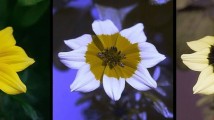Abstract
Sydney Shoemaker offers an account of color perception that attempts to do justice, within a functionalist framework, to the commonsense view that colors are properties of ordinary objects, to the existence of qualia, and to the possibility of spectrum inversions. Shoemaker posits phenomenal properties as dispositional properties of colored objects that explain how there can be intersubjective variation in the experience of a particular color. I argue that his account does not in fact allow for the description of a spectrum inversion scenario, and that it cannot sustain a functionalist relationship between an object's color and its phenomenal properties. Functionalists must, however, come to terms with Shoemaker's recognition that intersubjective spectrum shifts are possible.
Similar content being viewed by others
Notes
Shoemaker has come to prefer the phrase ‘appearance properties’ (Shoemaker, 2003, p. 275). I retain the terminology of his more familiar writings.
See Roderick Chisholm, 1957, pp. 45–53.
Otherwise unidentified page references in the text and notes are to Shoemaker (1996).
See Kriegel (2002), p. 185.
It is not clear that everything Shoemaker says about the relation between qualia and phenomenal character is consistent. For example, Shoemaker takes qualia to be constitutive determiners of phenomenal character (p. 255). But it's then unclear on what basis Shoemaker denies that there is any ‘what-it's-like’ element to qualia.
The present analysis of Shoemaker's account explains the critical point Joseph Levine makes when he notes that it's arbitrary to call Jack's state ‘reddish’ and Jill's ‘greenish’ (see Levine, 1999, p. 163). Levine's point still assumes that Shoemaker can assign colors to qualia, however arbitrary such assignments might be. The present analysis is more fundamental in that it holds that Shoemaker's account cannot even be adequately expressed.
Specifically, Shoemaker's considered view of phenomenal properties (revised from his 1996 account) is that each such property is “a disposition to produce (a specified experience, e.g., an R-experience) in creatures with visual systems of one or more sorts” (Shoemaker, 2000, p. 467). Shoemaker's earlier account had the unintuitive implication that phenomenal properties, although instantiated in external objects, exist only when perceived.
Michael Tye objects that Shoemaker's account counterintuitively entails that colors are basically not seen, since the subject experiences the phenomenal property rather than the color itself, and that Shoemaker's account “erects an appearance/reality distinction for the colors themselves” (Tye, 2000, pp. 463–464). I believe that Shoemaker's response is correct that colors are seen in virtue of experiencing a phenomenal property, where a particular such property is one of the ways in which a color presents itself. Shoemaker also rightly notes that the reference to an appearance-reality distinction suggests that there is one uniquely correct way of perceiving the color as it is, which is a key assumption Shoemaker is at pains to challenge. Tye is undoubtedly right that there are unintuitive elements in this aspect of Shoemaker's account, but Shoemaker, in acknowledging an unintuitive consequence of another aspect of his account, notes: “One would of course like an account which has no counterintuitive consequences. But in the case of color perception there is no chance of having that.” (Shoemaker, 2000, p. 467) In any case, my own criticism here is not about some counterintuitive element – it is that the account cannot be a functionalist one. And it stems not from Tye's “internalist” consideration of what it is that is basically seen – the phenomenal property vs. the color itself – but from “externalist” considerations of the functional relationship, or lack thereof, between the object's color and its phenomenal properties.
This quote is from a context in which Shoemaker is discussing the consequences if qualia are functionally indefinable. But on p. 264 Shoemaker argues for the likelihood of the functional indefinability of qualia.
See Shoemaker, p. 250. The relevant phenomenon concerns intersubjective variation in perception of unique or pure hues. See Hardin, 1988, pp. 39, 76–80.
References
Chisholm, R. (1957). Perceiving: A philosophical study. Ithaca: Cornell University Press.
Hardin, C. L. (1988). Color for philosophers. Indianapolis: Hackett.
Kriegel, U. (2002). Phenomenal content. Erkenntnis, 57, 175–198.
Levine, J. (1999). Philosophy as massage: Seeking cognitive relief for conscious tension. Philosophical Topics, 26, 159–178.
Shoemaker, S. (1996). The first-person perspective and other essays. Cambridge: Cambridge University Press.
Shoemaker, S. (2000). Phenomenal character revisited. Philosophy and Phenomenological Research, 60, 465–467.
Shoemaker, S. (2003). Content, character and color. In E. Sosa & E. Villanueva (Eds.), Philosophy of mind Supplement to Nous (Philosophical Issues, 13, 253–278).
Tye, M. (2000). Shoemaker's The first-person perspective and other essays. Philosophy and Phenomenological Research, 60, 461–464.
Author information
Authors and Affiliations
Corresponding author
Rights and permissions
About this article
Cite this article
Triplett, T. Shoemaker on Qualia, Phenomenal Properties and Spectrum Inversions. Philosophia 34, 203–208 (2006). https://doi.org/10.1007/s11406-006-9014-z
Received:
Accepted:
Published:
Issue Date:
DOI: https://doi.org/10.1007/s11406-006-9014-z



